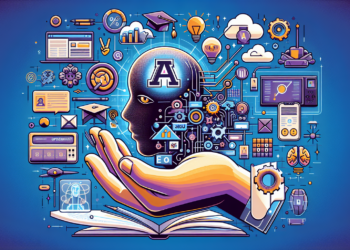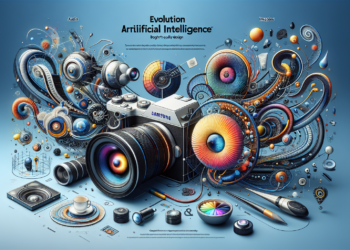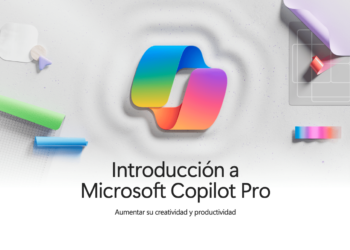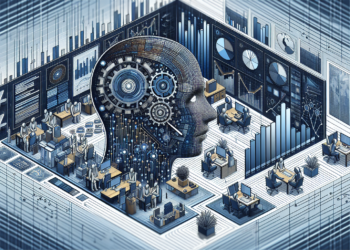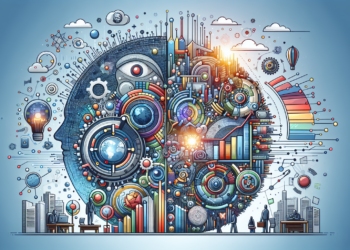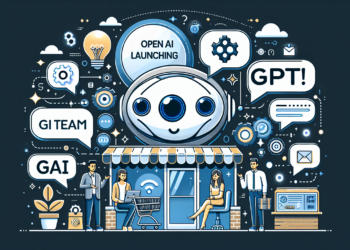The series of language models known as “Generative Pre-trained Transformer” (GPT) represent one of the most significant advancements in the field of artificial intelligence. Designed by OpenAI, these models have revolutionized not only text generation, but also machines’ understanding and interpretation of human language.
Theoretical Foundations: Transformer Model
Starting with the theoretical base, GPT derives its main architecture from the Transformer model, introduced in the paper “Attention is All You Need” by Vaswani et al. in 2017. The Transformer abandons the use of recurrences and convolutions in favor of attention mechanisms that weigh the relative importance of different words in a text sequence.
Attention is mathematically detailed by:
[ text{Attention}(Q, K, V) = text{softmax}left(frac{QK^T}{sqrt{dk}}right)V ]
where ( Q ), ( K ), and ( V ) represent the query, key, and value matrices respectively, and ( dk ) is the dimension of the keys.
GPT-1: The Origin of an Innovative Series
The original GPT applied this architecture with two essential concepts: supervised learning and a task-specific “fine-tuning” phase. A crucial breakthrough was its capacity for generalization, that is, the ability to apply knowledge gained in one domain to perform effectively in another.
GPT-2: Scale Increase and Educational Purposes
With GPT-2, OpenAI dramatically increased the scale. This model, with 1.5 billion parameters, demonstrated that larger models could capture finer nuances of language. A notable improvement was the focus on “zero-shot learning” — performing tasks without specific examples during training.
GPT-3: A Titan in the AI Era
The leap to GPT-3 is characterized by its unprecedented scale: 175 billion parameters. GPT-3 is capable not only of producing coherent and contextually relevant text but also of performing tasks that traditionally would require logical comprehension, such as translation, summarization, and code generation.
Emerging Applications
An emerging field of application for models like GPT-3 is the creation of advanced “conversational agents”. These can be integrated into customer support systems, providing more natural and useful human-like responses.
Additionally, in the health domain, the aggregation and analysis of medical information by GPT-3 is aiding the synthesis of new reports, which represents a valuable tool for medical professionals and pharmaceutical research.
Recent Technical Contributions
The continuous improvement of GPT models is based on optimizing the number of parameters and the efficiency of learning. Methods such as “Sparse Transformers” have been proposed, which modify the attention mechanisms to lighten computation without sacrificing performance.
The incorporation of multimodal capabilities, where the model processes not just text but also images and sounds, is opening new research avenues for a broader and more diversified understanding of context by the models.
Comparison with Preceding Models and Evolution
Compared to previous models such as LSTM or GRU, GPT offers advantages in terms of the quality of generated text and its capability to transfer to multiple linguistic tasks. However, these earlier models remain relevant for specific applications that require simpler network structures or fewer computational resources.
Challenges and Future Directions
GPT models face significant ethical challenges linked to the generation of “deepfakes” or the spread of misinformation. Research is directed towards detecting and mitigating these unwanted uses.
The future of GPT models might lie in the integration of external knowledge, allowing them to reason and make inferences based on a structured database of facts, moving even closer to the understanding of natural language.
Case Studies
A case study would involve the use of GPT-3 in formulating scientific hypotheses. The model’s ability to generate text based on a dataset led to the identification of possible explanations for phenomena not fully understood in molecular biology, demonstrating how these models can be used in highly complex creative tasks.
In conclusion, the GPT series represents a vibrant area of artificial intelligence that continues to evolve by leaps and bounds. Although it’s difficult to predict precisely where advances in these technologies will lead us, it is undoubtedly clear that we are witnessing a milestone in the history of artificial intelligence and our interaction with machines.


